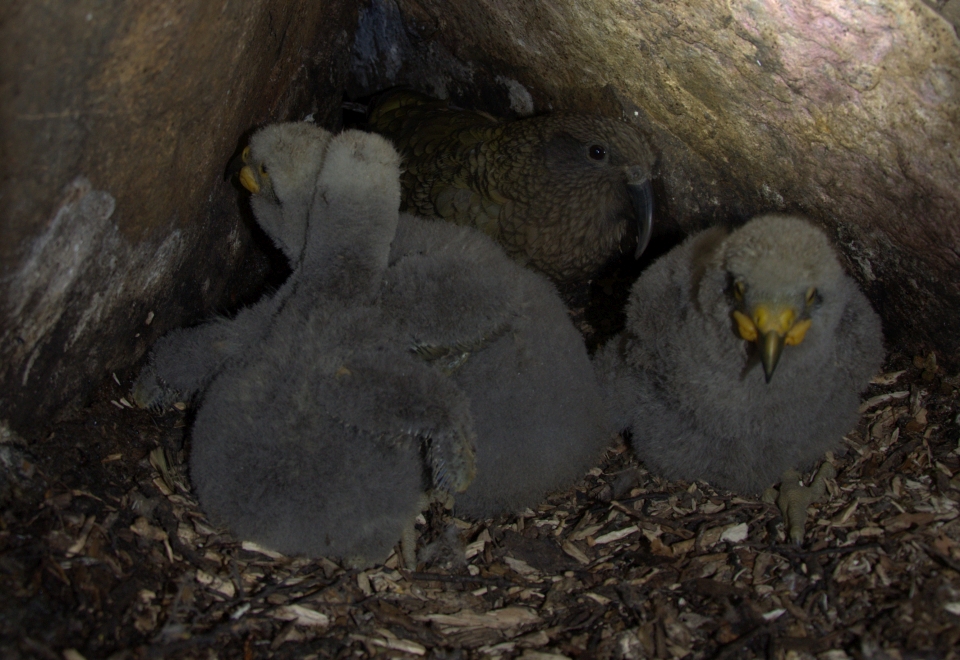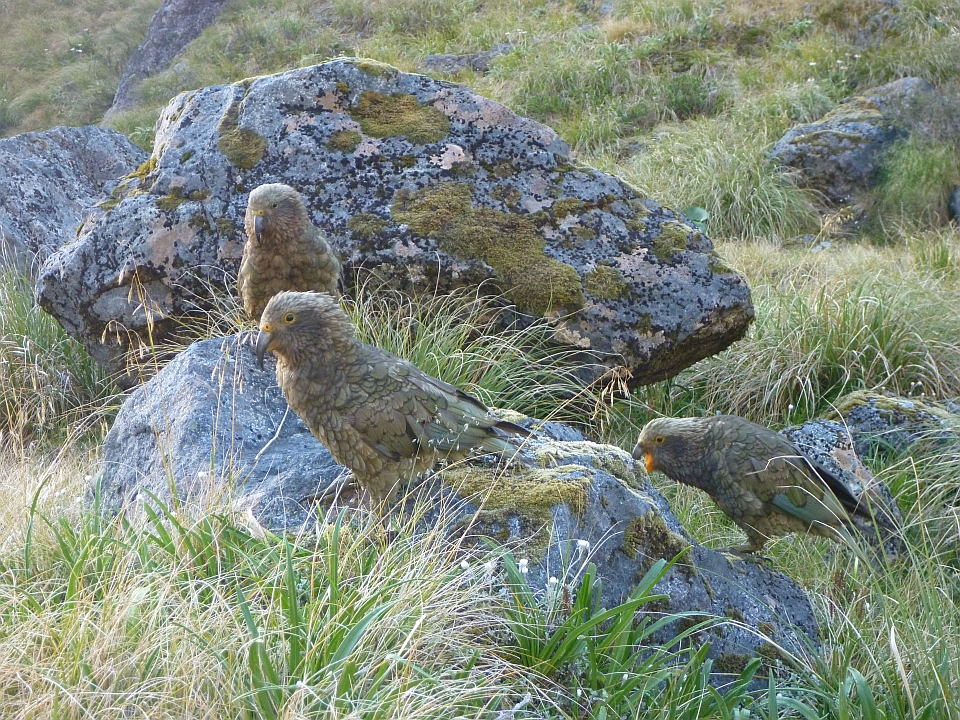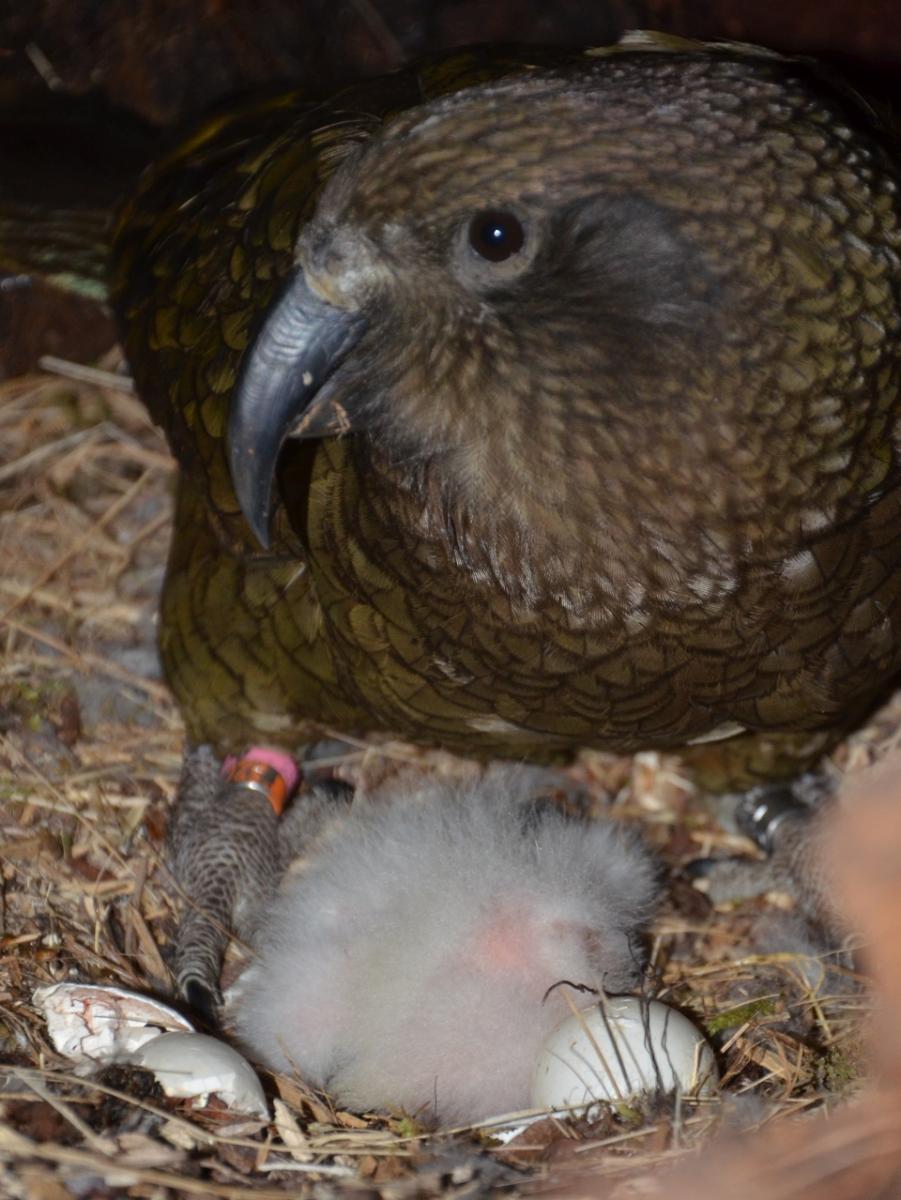You can contact LEARNZ, part of CORE Education, at:
Postal Address:
PO Box 13 678,
Christchurch 8141,
New Zealand
The life-cycle of the kea can be divided into 4 general periods;

Keas nest on the ground in the mountains in naturally formed cavities, often in forest and boulders. Breeding occurs in most years, but only about half of all adult females breed in any given year.
Breeding occurs as early as July through until January. The female lays a clutch of three to five eggs which she incubates for about one month. The female cares for the eggs and nestlings in the cavity, while the male forages for the whole family.
Because it takes about four months to incubate eggs and fledge chicks it is uncommon for kea to rear more than one brood in a season.
If the eggs fail to hatch or are damaged, or if the chicks die, pairs will usually re-nest almost immediately.
Kea are most vulnerable during this life stage due to predation of chicks and females on nests by introduced predators; in particular stoats.

Kea form large social flocks and often there are leaders within these flocks. Studies have recorded groups of up to 20 birds during the summer period. These large flocks disperse into groups of two to six in autumn.
Movement of kea depends on the season and how much food is available. Birds are seen at higher altitudes in the warmer months and retreat back to the shelter of beech forests during autumn and winter.
Kea in their first year are vulnerable to many threats due to their curiosity.
Kea in their second and third years continue flocking in a mixed group learning about their environment and social structure.
Once adults reach three to four years of age they tend to leave the main flock and pair up for breeding. Pairs generally stay together for life. Mating behaviour begins in midwinter around June. Egg laying begins in July and peaks in October, but can extend right through into January.
Kea are long lived and reproduce slowly so the population can decline quickly but take a long time to recover.

Complete the Kea life cycle quiz >
Why would it be useful for people trying to help kea to monitor their nests and how do you think they do this?